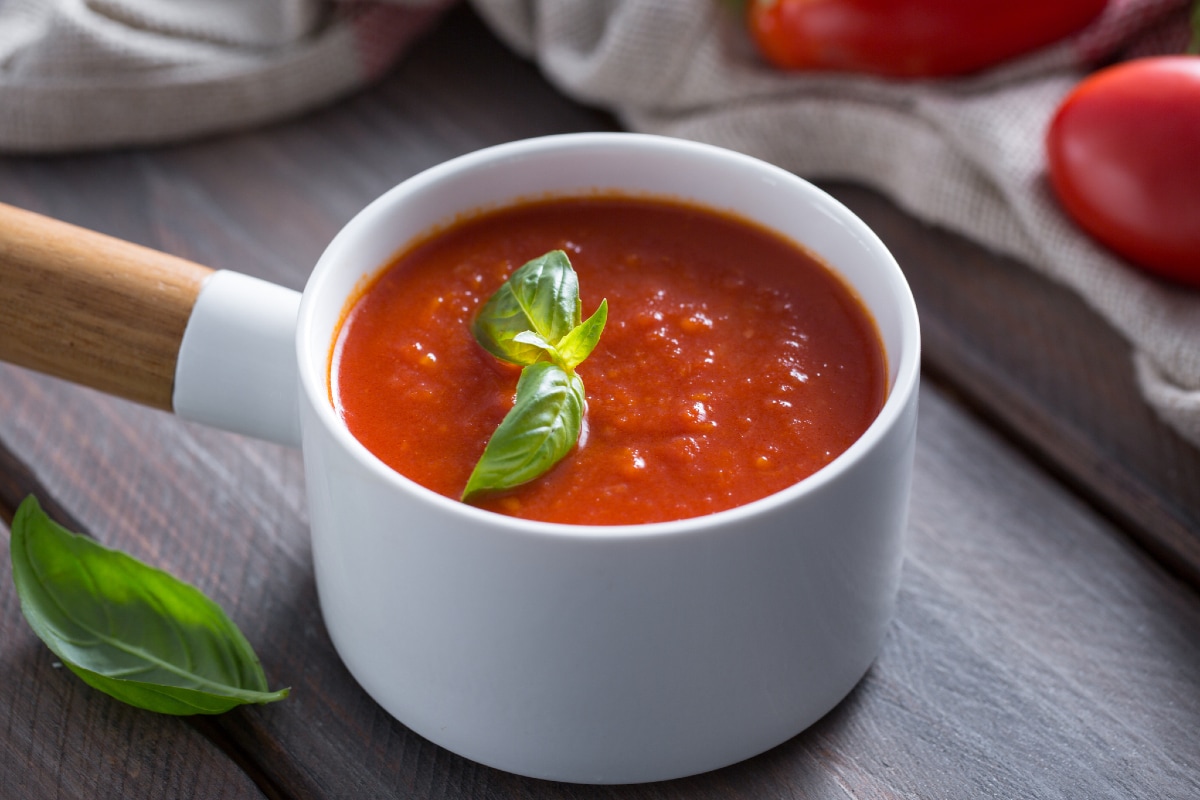Tomato passata
- Easy
- 1 h 30 min


There's nothing like the vibrant flavors of homemade Fresh Tomato Basil Sauce to elevate your meals! This classic Italian recipe captures the essence of ripe, sun-kissed tomatoes and fragrant basil leaves, creating a sauce that's as versatile as it is delicious. Perfect for pasta, pizza, or as a base for your favorite dishes, this recipe ensures you're savoring the very best of seasonal ingredients.
Did you know that this simple yet elegant sauce has roots in Italy's countryside, where families would simmer fresh tomatoes picked at their peak? This tradition continues today, offering a taste that's comforting, wholesome, and authentically Italian.
Get ready to impress your family and friends with this easy recipe!
Discover more delicious Sauces recipes and elevate your cooking game!

To prepare tomato sauce, start by checking the tomatoes one by one, to made sure there aren't any spoiled ones, with bruises or spots. Wash them thoroughly 1 and remove the stalks. Cut each tomato in half lengthwise 2 and squeeze to remove the middle part with the seeds 3.

Continue in this way and collect all the tomatoes in one bowl and the juice in another 4. Below you will find lots of ideas on how to reuse it! Now place the tomatoes in a large saucepan 5 and lightly sweat them on a low flame for around 30 minutes, stirring occasionally 6.

When the tomatoes have nicely wilted 7, add salt. Stir and wait a little longer 8. Now blend a few tomatoes at a time in a tomato press, on a fine to medium setting 9.

Place the puree in a bowl 10. In the meantime, finely chop the carrot 11 and the onion 12.

Add a drizzle of oil and then the finely chopped vegetables to the saucepan you cooked the tomatoes in 13. Cook for 5-6 minutes, stirring occasionally. Now add the tomato puree 14 and cook for another 30 minutes on a low flame, stirring occasionally 15.

Make sure the sauce is the right density 16 and place it in a container 17; add a basil leaf 18 and use it as you like!